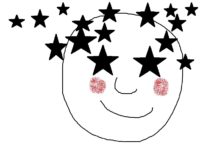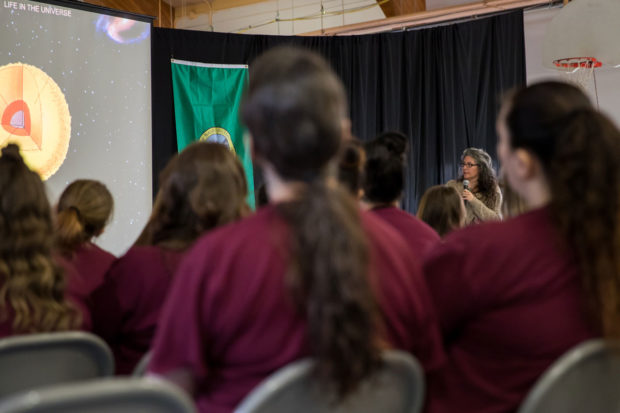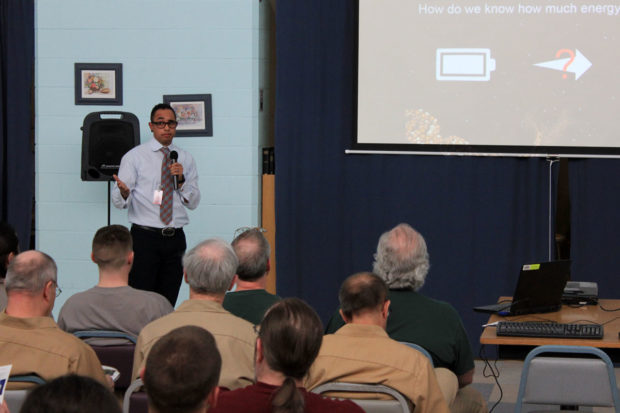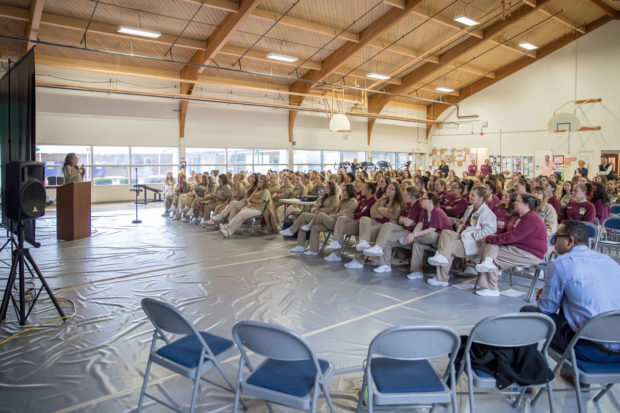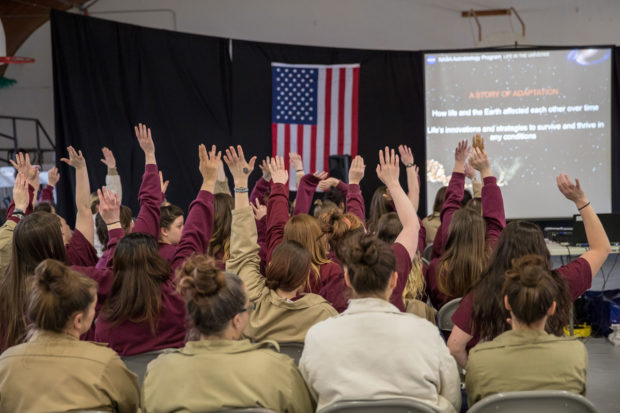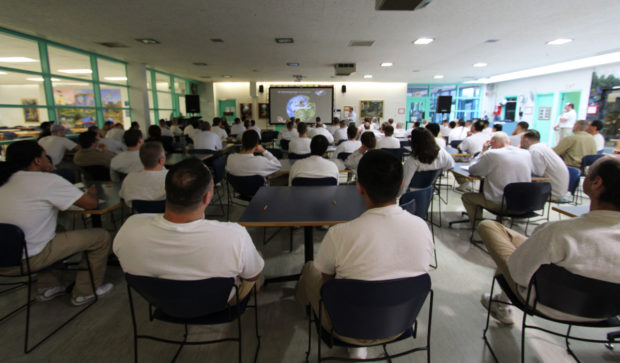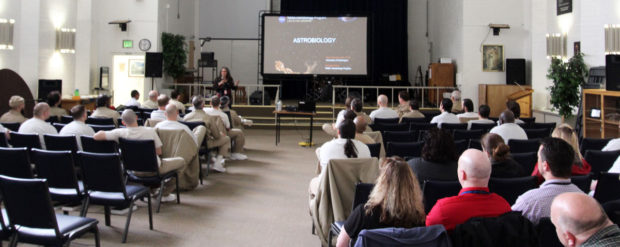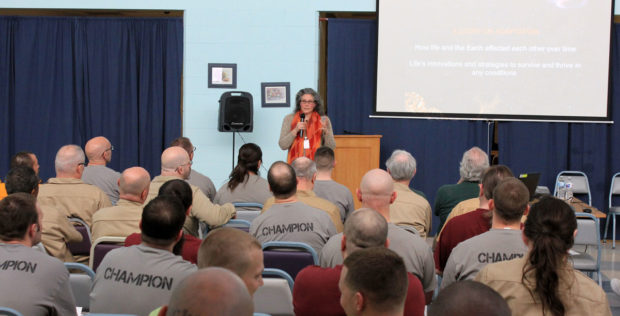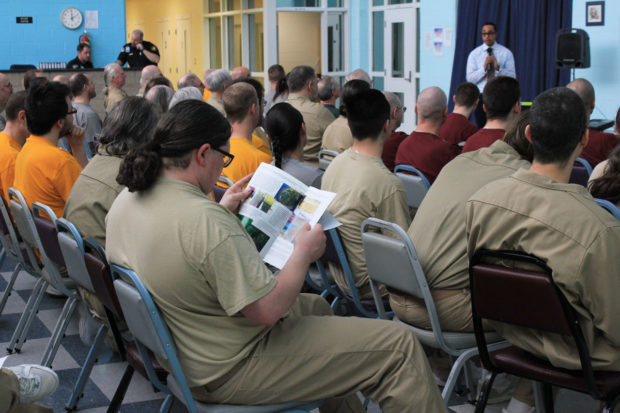by Joslyn Rose Trivett, SPP Education and Outreach Manager
Note: See an earlier article for an introduction to the Astrobiology for the Incarcerated program
In late April, the Astrobiology for the Incarcerated program visited five prisons plus a youth facility in Ohio. In four densely-packed days, we reached 440 incarcerated participants and 55 staff and teacher participants—it was a satisfying whirlwind of activity and ideas. Ohio Department of Rehabilitation and Correction‘s Energy Conservation & Sustainability Administrator Jacqueline Langhals gave excellent administrative support for the program, and Corrections staff and incarcerated students were gracious and enthusiastic hosts. Whereas Dr Drew Gorman-Lewis presented on astrobiology research in the Washington State series, in Ohio it was Dr Jackie Goordial who covered research; she is a microbiologist currently at the Bigelow Laboratory for Ocean Sciences.

Science vs Religion?
In Ohio, nearly every event was held in the prison chapel, which—for many—elicited a perceived conflict between science and spirituality. Luckily, Daniella Scalice is a master of taking a hard question and suggesting how to transform it into a beautiful idea. She offered that we think about astrobiology’s origin stories as complementary, even reinforcing, the origin stories of many religions. She pointed to the root meaning of the word Universe: uni meaning one; verse meaning story. Thinking about it this way, astrobiology gives us one of many powerful and meaningful origin stories.

The Pale Blue Dot
At every presentation, Daniella read a moving quote by Carl Sagan in which he describes a photograph of Earth taken by Voyager 1 from about 4 billion miles away; the earth appears as a pale blue dot—barely visible at that distance:
Look again at that dot. That’s here. That’s home. That’s us. On it everyone you love, everyone you know, everyone you ever heard of, every human being who ever was, lived out their lives. The aggregate of our joy and suffering, thousands of confident religions, ideologies, and economic doctrines, every hunter and forager, every hero and coward, every creator and destroyer of civilization, every king and peasant, every young couple in love, every mother and father, hopeful child, inventor and explorer, every teacher of morals, every corrupt politician, every “superstar,” every “supreme leader,” every saint and sinner in the history of our species lived there—on a mote of dust suspended in a sunbeam.
~ Carl Sagan, 1994

Impromptu Seminars
At every facility, the incarcerated students brought excellent observations and queries. As Jackie described her research on microbes in an Antarctic desert and the depths of the Atlantic Ocean, she was peppered with keen questions. Sometimes, the questions were so insightful that Jackie would pause before responding to say, “That’s amazing.” Then she would explain how the question exposed the very heart of the topic, bringing up questions that she and her colleagues had investigated for months, or would be central to her future work as a scientist.


Following every presentation, many students would gather for informal seminar on astrobiology topics. Jackie and Daniella fielded their questions and input with grace and humor, listening carefully and validating the many astute observations. They discussed pathways for studying astrobiology and other scientific disciplines, how a person can become a scientist, and who pays for scientific research and outreach.

What next?
Next on the schedule is Florida Department of Corrections, where seven facilities will host the program in September. At the same time, the team will offer return visits and multimedia materials for prison libraries. Noble Corrections Institution plans to do even more, creating a multi-speaker series that’s a proper “program” yielding a certificate; speakers would present via video, and those sessions would tie to the multimedia library with post-lecture “homework” assignments. Sounds like an ideal iteration of the program!
Abundant thanks to all the staff, leadership, and incarcerated students in Ohio. It would be wonderful to bring the program back again in the future!


